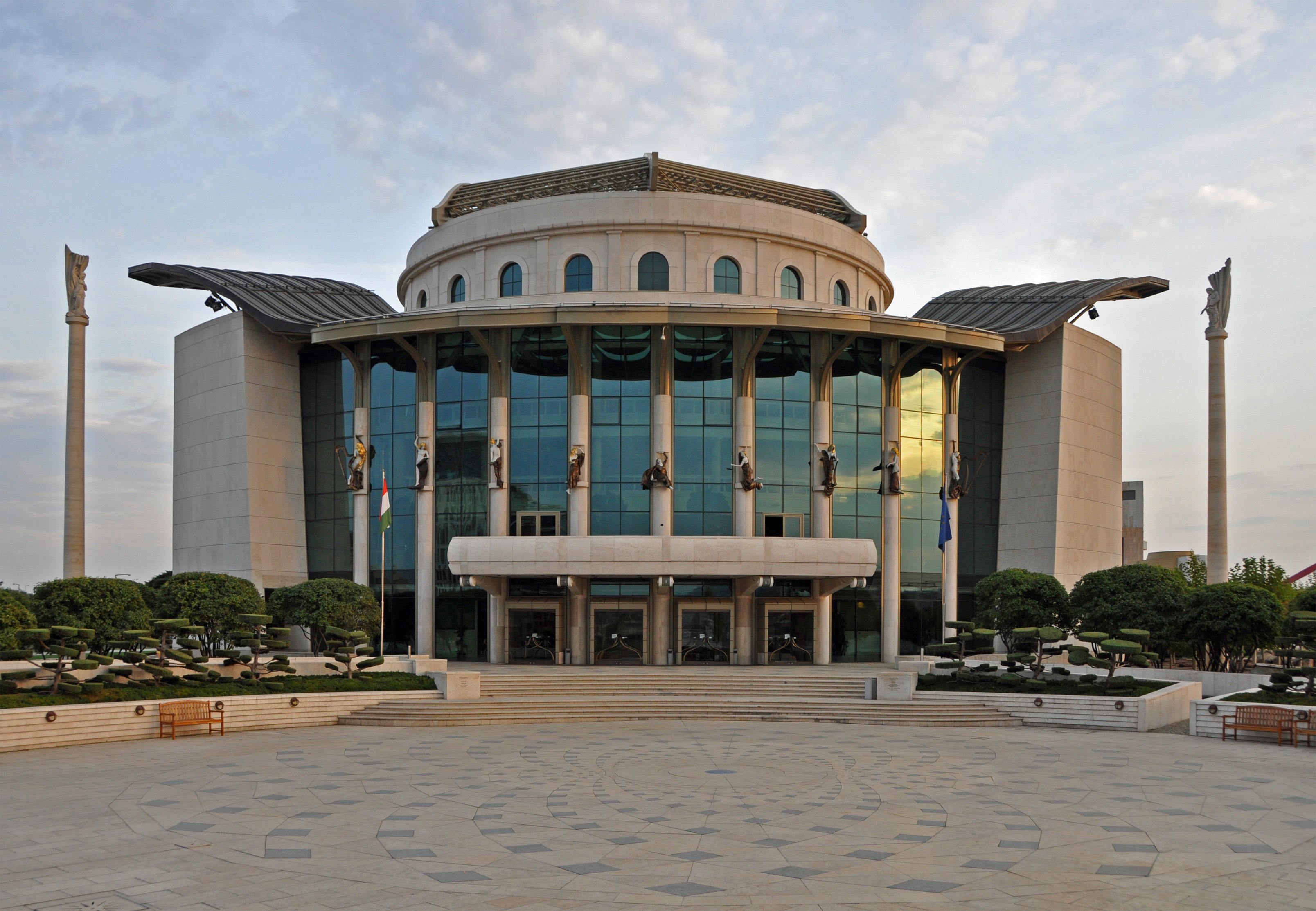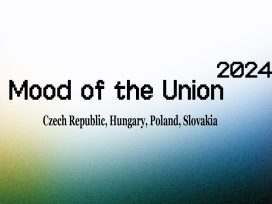Metaphors from football and war reporting have become popular in Hungarian public debate since Orbán came to power in 2010. Every day brings news of ‘raging battles’ and ‘great victories’; a well-known Orbánism is the expression ‘total offensive right across the field’. This ‘total offensive’ is a part of everyday life in Hungary. Orbán and his people are waging it on society as a whole.
The attack on culture began just a few weeks after the second Orbán government was formed. But it came as no surprise. The first Orbán government (1998–2002) and the local elections in 2006 had offered a taste of things to come. Yet goings-on in cultural institutions in the municipalities run by Fidesz between 2006 and 2010 merely foreshadowed developments after Orbán’s election landslide in 2010.
During his first term in office, Orbán set about establishing himself as the arbiter of culture, using both symbolic and very concrete means. The former included the creation of a museum of communist oppression, the so-called ‘House of Terror’, the idea for which came from the historian Mária Schmidt, who is close to Fidesz and a consultant to Orbán. The so-called ‘state flags’ flown at official occasions represent another symbolic gambit. Also in this category was the opulent ceremony surrounding the Hungarian royal crown, which was brought from the National Museum into Parliament, travelling by boat from the old royal palace in Esztergom, with a holy mass laid on for the occasion that went on for several hours.
Orbán’s ideas for ‘turning around’ Hungarian culture were not only expressed in symbolic gestures, but also in his dealings with the National Theatre. For a long time playing at a provisional site for lack of a home of its own, in 1996, a competition was launched for a new building on Erzsébet Square in the heart of Budapest. Building works on the winning design began in 1997 but were halted a few months into the first Orbán government. The new theatre was now to be located outside the city centre; the foundations on Erzsébet Square, including a noise-insulated underground garage, nicknamed ‘the pit’ by the locals, would remain a building site.
The Director of the Theatre, the Orbán appointee György Schwajda, dispensed with any competition and commissioned architect Mária Siklós to work on the new construction project. Siklós had worked with him on the modernisation of his last theatre in Szolnok and had also built his villa. Another significant indicator of Orbán’s relationship to culture came during his second term in office, with the hiring of film director Géza Bereményi to make a film about Count István Széchenyi, one of the outstanding figures of Hungarian history. Money was no object – the project was supplied with the biggest budget in Hungarian film history. The lead role in the lavish historical epic A Hídember (‘The Bridgeman’) was played by a supporter of Orbán, the actor Károly Eperjes. The film met with moderate success at best.

Hungarian National Theatre in Budapest (2009). Source: Wiki Commons
From culture wars to new elites
While the first Fidesz government hoped for support from the cultural scene, in 2010 Orbán chose a different method. ‘Replacing the elite’ was now the openly declared solution. Intellectual and political independence was done away with and in culture, like in all other areas, Orbán-loyal cadres were hoisted into key positions. As sociologist András Bozóki remarked, this was ‘no longer a culture war, but a war against culture. The ideology of the replacement of the elite is anti-communism, anti-globalisation and an ill-defined “national commitment”, which is mainly manifested in symbolic messages.’
Orbán announced the replacement of the elite at Fidesz’s annual ‘Citizens’ Picnic’ in Kötcse in 2009, in a speech which also included his most important cultural-political perspectives for the 2010 election. It would be wrong to see this move as being solely ideologically motivated. Fidesz’s strategy for deploying its cadres is based much more on power and money – which is why Orbán was so quick to fill out the most important posts with his own people.
The Hungarian Academy of Arts (Magyar Művészeti Akadémia) plays a central role in Orbán’s cultural policy. Founded in 1992 by 22 artists close to the ruling rightwing conservative Hungarian Democratic Forum (Magyar Demokrata Fórum, MDF), it started out as a private association conceived as a ‘counter-academy’ to the Széchenyi Academy of Literature and Arts, established in the same year under the roof of the Hungarian Academy of Sciences. In the new constitution agreed upon by a Fidesz majority in 2011, this private association became a public body. The new constitution and other laws made the Hungarian Academy of Arts more or less the supreme decision-making body when it came to distributing public funding for culture.
In April 2013, a large number of artists from Hungary and around the world put their names to an open letter protesting this move. The new status of the Academy of Arts meant that a closed circle of staunchly conservative artists could now decide on the award of subsidies, salaries, stipends, state prizes and so on to the country’s artists. The President of the Academy, György Fekete, an eminent interior architect under the Kádár regime who after 1989 first sided with a variety of political positions, distinguished himself early on with ultra-conservative views and unconditional loyalty to Viktor Orbán. After taking office at the Academy of Arts in 2011, he spoke out strongly against what he saw as ‘degenerate’ art: ‘Anyone wishing to become a member of the Academy must have a sense of nationality, must love Hungary with its language and its flaws, and not damage the country’s reputation from abroad’, read the new guideline issued by Fekete. The President of the Academy specifically regretted that ‘abroad, even György Konrád is thought of as a Hungarian, whatever he says about us’. Fekete announced that artists ‘who disparage Hungary from abroad’ may in the future no longer be admitted to the Academy – and therefore have to go without the generous subsidies that the state pays its members.
This was too much even for the board of the Academy. In January 2013, there was a move to remove Fekete, as his behaviour and statements were seen to be damaging and dividing the cultural scene. But Fekete, then 81 years of age, refused to step down – and the leadership of the Academy accepted that ‘in the interests of continuity and taking into account justified criticisms’, the president would carry on in the role. Following a small spate of resignations (about a dozen members left the Academy), the protests against Fekete dwindled. It was only in October 2017 that the 47-year-old conductor György Vashegyi, a moderate, was selected as his successor; since then, Fekete has held the position of honorary president. That he encountered and continues to encounter so little resistance, even though his principles and methods were so well-known, is above all due to the fact that the organisation, which according to Fekete himself had creaked along like ‘an old cart’ for decades, was transformed under his leadership into a ‘gleaming fighter jet’. In spite of the economic crisis, 2.5 billion forints (8.4 million euros) flowed into the Academy from the treasury in 2012; since then, the sum has increased many times over.
Control of the institutions
Control of cultural institutions is one of the key questions for the Orbán government. The period 1998–2002 was too short, and the government’s majority too slim, to permit it to carry out its project. In 2010 it acted swiftly and decisively: museums were amalgamated; the National Gallery was ‘incorporated’ into the Museum of Fine Art; a government commissioner was appointed to the board of the Budapest State Opera, and would later become director. Along with the football stadiums, the National Theatre was close to Orbán’s heart. He commissioned the new building as the March 2002 election campaign was heating up, and after his election in 2010 sought to reclaim the theatre from the ‘usurper’ Róbert Alföldi, who was appointed director in 2008 under the socialist government (MSZP). For three years, Fidesz conducted a regular witch-hunt against the extraordinarily successful theatre director, who in the eyes of the party was not qualified to speak ‘authentically on matters of national destiny’. In spite of this campaign, Alföldi remained in the post until his contract ran out in 2013. His successor is Attila Vidnyánszky, who has described the National Theatre as a ‘sacred place’. In an interview following his appointment, Vidnyánszky went so far as to contemplate having the building ‘consecrated, as I believe that the National Theatre is something that – like the spirit of the nation – can only be grasped in a metaphysical dimension.’
Vidnyánszky’s nomination was one in a series of similar cases. Following Fidesz’s victory in the local elections in autumn 2006, politically-engaged actors who had taken to providing a ‘living backdrop’ for Orbán at Fidesz press conferences began, one after another, to find themselves being appointed to run regional theatres.
There has been a rule in Hungary since the mid-1980s that such positions must be publicly advertised; applications are considered by a panel of experts and then the appointment is decided by vote. In the cities where the newly-elected Mayors were members of Fidesz, the procedure was somewhat different. The posts were publicly advertised, specialist panels discussed the candidates, but in every case the job went to the person closest to Fidesz. In the west Hungarian city of Kaspovár, which over the last 60 years has been the scene of many important theatrical experiments and productions, none other than the Orbán loyalist György Schwajda (the former director of the National Theatre) came out on top as the new theatre director. In his application, which was eventually made public against his wishes, he had written almost nothing about his own plans, restricting himself to railing against his competitors.
Appointments to vacant directorships in other cities followed a similar script. At the important Pécs National Theatre Festival, leading lights of the Hungarian stage protested against this method, which in 2007 saw TV comic Péter Balázs (also known for his loyalty to Orbán) being made the director of the Szolnok theatre. In a joint open letter, they expressed their belief that ‘city council meetings cannot overlook the opinions of their own expert advisory panels’ and insisted on ‘substantive arguments’. Director Imre Kerényi, who in 2011 was named ‘Special Commissioner to the Prime Minister for creating national moral consciousness and for protecting and fostering Hungarian cultural values’, answered the protests in an open letter of his own. In it, he gave an unambiguous description of the essence of Orbán’s strategy of staffing theatres and other cultural institutions with Fidesz supporters.
The letter begins with a reference to the ‘flashing blue eyes’ of the new director (an allusion to Balázs’s non-Jewish heritage) and goes on to state that harping on about artistic accomplishment is a shabby, Bolshevist trick on the part of the critics, but one which won’t work: ‘in a democracy, too, politics decides everything’. The time for men like Péter Balázs had arrived, Kerényi said, calling upon his colleagues ‘who are not supporters of liberal-left ideas’ to apply.
They took this call to heart. Actor Péter Cseke, who made it his business to be standing near Orbán at all the latter’s big announcements, became the head of the Kecskemét theatre – offering a programme ‘tailored to the audience, with national characteristics’, including ‘instructions on a life of faith and plays in keeping with religious belief’. The takeover of the theatre in Győr proved harder work, but it was eventually achieved. The election of a new head of the Székesfehérvár theatre sparked a scandal. There, the successful candidate was an actor chiefly known for a dazzling career in TV ads, who also happened to be the son in law of Orbán-supporting tycoon Gábor Széles. His manifesto was firm about ‘fostering the development of a national soul’.
After Orbán came to power, things began happening in all areas of culture. More theatres were passed into the hands of people from Orbán’s circle. In Budapest, the new Mayor, István Tarlós (Fidesz) put actor György Dörner in charge of the Új Színház (New Theatre). Dörner is one of the most important figures in the far-right, antisemitic Jobbik party and has appeared at numerous party events. In a number of other cases, the recommendation of the jury was sought as a mere formality, as with the re-hiring of a theatre director in Szombathely. In 2007, Tamás Jordán, the famous actor, director and former head of the Merlin Theatre and the Budapest National Theatre, had founded a new theatre in the city, which over time developed a reputation for interesting and important work. After his second term, Jordán re-applied for the job. The only opposing candidate withdrew and the panel proposed Jordán for the post. However, the Fidesz majority in the city council decided against him because of his political views. It was only after a second selection process that he received a contract for 2017 to 2021.
Film: A special case
Cinema was an easier target and much more attractive, since it involves much bigger money. A country with a population of ten million like Hungary could never make its way as a player in the film market without state subsidies. The film support system that Orbán inherited when he took office in 2010 worked well. Hungarian cinema was enjoying a spectacular boom, with young film-makers winning international acclaim; the industry’s output was astonishingly varied. The basis of the system of film subsidies was a 2004 film law. Like similar laws in a number of western European countries, this reserved a portion of lottery income for film productions. The money was administered by a public foundation, the Motion Picture Public Foundation of Hungary (Magyar Mozgókép Közalapítvány), led by elected representatives from 26 organisations in the film industry.
The Orbán government’s attack on cinema was swift. The film-makers were accused of embezzling funds and the system was dismantled. The accusers kept it vague; formal charges were never brought, nor was anything ever proved. It was all about defamation, and preparing the way for the next personal and institutional moves. The outgoing government was denounced; since they were so discredited, the argument went, radical reform was needed. The American producer Andy G. Vajna, a Hungarian who had made his name working in the US on films with Sylvester Stallone, Bruce Willis and Arnold Schwarzenegger, now took centre stage, cast in the role of the ‘saviour’ of Hungarian cinema. In 2010 he was taken on as the ‘Government commissioner for renewing Hungarian cinema’. Alongside the slanderous accusations of corruption against the public foundation, the real motivation for the change came into play. Up until then, everything had been terrible, declared secretary of state Géza Szőcs to a meeting of film-makers in late 2010, ‘but now we are building a new world’.
‘Building’ began in 2010 with the literal destruction of the Hungarian film industry: all state financing was halted and all ongoing projects put on ice. For more than two years after Vajna took office, no films were made. The newly-founded National Film Fund continued to receive the funds allocated to it in the budget, but these were never disbursed. Following a pause of around three years, the film fund again began to distribute subsidies – albeit in a completely opaque manner. A distinct advantage of the Vajna system is that the government commissioner controls so much money that he is not obliged to limit himself to funding regime propaganda films: now and then projects are subsidized that don’t come from Fidesz propagandists.
Around 20 films are now produced on average each year (before 2010 the figure was 25). Hungarian cinemas draw around a million viewers each year. This is celebrated as a success. But the fact that this is the same figure as in 2008 goes unmentioned. The majority of film-makers put up little resistance to this new system, since unlike literature, film is dependent upon extensive subsidy. The formerly well-organised film industry, which would once have been able to defend its interests effectively, has simply fallen apart, according to one of the most successful directors of the generation in their forties, György Pálfi. There is no getting around the state, or Vajna, he says.
Committees taken over or mothballed
Film and theatre are not the only cultural sectors to have come into Fidesz’s crosshairs – the offensive was indeed ‘total’. For example, shortly after Orbán assumed power, the National Cultural Fund was restructured. Originally an independent body, it was responsible for distributing subsidies across all cultural sectors. A great advantage of the cultural fund was that it was independent of government. But Orbán subordinated it to a minister and a secretary of state, who henceforth had the power to revise the decisions of the committees responsible for the various cultural sectors. In summer 2010, members of the Cultural Fund’s councils responsible for publishing were replaced with Fidesz sympathizers. The procedure appeared paradoxical. The state created a fund which was charged not only with distributing money, but also with ensuring that decisions be made by qualified representatives. However, the government then intervened to ensure that these qualified, elected experts could not make democratic decisions about the money.
The committees were thus destroyed and Fidesz politician László L. Simon was put in charge of the cultural fund. Simon then went on to set policy and decide who would and would not be allowed to send delegates to the committees. Soon, representatives of various organisations which had never been heard from before – most of them Fidesz supporters – had majorities. One result of this was that several important magazines lost their subsidies and had to cease production, or work without pay, hoping for better times to come. According to literary historian, editor and author József Tamás Reményi, who was briefly a member of the council responsible for publishing, it soon became clear that delegates from organisations invited by the governments behaved like puppets, mechanically bloc-voting. Reményi resigned from the committee and explained his decision in a public statement. In summer 2017, he published another letter of protest against the iniquities of the state’s new literature subsidy system and appealed to his colleagues to refuse to take part in this grubby, immoral game, whose sole purpose was to create a cultural Praetorian Guard for the political leadership.
However, the government’s intervention into literature was not limited to stopping funding. The Orbán government’s ‘positive’ interventions included the 2012 creation of the state-funded publisher Nemzeti Könyvtár (National Library), which published the classics of Hungarian literature side-by-side with books with antisemitic and fascist themes. The programme was led by Imre Kerényi, whom we have already encountered. Here, as in the education system, the goal is to alter the literary canon. Recently, Hungarian schools have started teaching works by writers like Albert Wass, around whose books the government is trying to promote a regular cult, or József Nyírő, a propagandist and supporter of the Arrow Cross regime.
Memory battles
Orbán’s politics of remembrance, which rests chiefly on the falsification of history, on crudely reshuffling the national pantheon, and on cultivating the myth of Hungarian victimhood, can only be outlined here. Currently, the emphasis is on blaming on the Germans, who are supposed to have forced the hand of an innocent Hungary during the Second World War. Because Russia and Turkey now seem to be on friendly terms with Hungary, it is not opportune to lash out at them. The 2014 memorial to the victims of the German occupation in Freedom Square in Budapest clearly embodies this historical-political course: it shows a German imperial eagle attacking the Archangel Gabriel, the traditional symbol of Hungary. The meaning of the image is plain: the Hungarian state – Germany’s last ally – was at most only partially responsible for what happened on Hungarian soil between October 1944 and April 1945, including the deportation and murder of the Hungarian Jews. This is a peerless example of historical falsification. Behind the memorials, on the steps of the Calvinist Church, stands one of the country’s many monuments to Admiral Horthy.
In 2016, at the initiative of the town council of Székesfehérvár, and with the financial assistance of the government, Bálint Hóman a minister in Ferenc Szálasi’s Arrow Cross government who was sentenced to life in 1946 by a Hungarian People’s Court for war crimes, was honoured with a statue. The consecration ceremony was only cancelled following a protest by the US government. To look at Kossuth tér, the large square in front of parliament, it is obvious that it has changed a lot in just a few years. Many of the old statues disappeared in the redesign of 2013 and 2014. In their place are some new statues, and some even older ones: the square is now laid out much as it was in 1944. Gone is the statue of progressive politician Mihály Károlyi, the first head of state of the short-lived 1918 Hungarian Republic, which once stood on the north side of the parliament. The George Lukács memorial has also been removed from the Szent István Park. His statue is not the only thing that’s gone, either. The Lukács Archive, attached to the Academy of Sciences, which was once housed in the former flat of the philosopher who died in 1971, was dissolved in 2017 and the researchers dismissed.
The same fate befell one of the most important institutions of contemporary historical research: the Institute for the History of the 1956 Hungarian Revolution (generally known as the ‘1956 Institute’). It was closed down in 2012 and merged with the National Library. On the other hand, new research institutes were created, in parallel to those of the Academy of Sciences. In 2013 the Orbán government founded the historical institute Veritas, whose head, Sándor Szakály, has characterized the 1938 ‘Jewish Law’ not as depriving Jews of their rights, but as placing certain limits on those rights, with a corresponding expansion of opportunities for non-Jews. The ‘Hungarian Research Institute for National Strategy’ (Nemzetstratégiai Kutatóintézet) was set up in 2012; its major contribution to human knowledge so far is that the greatest Hungarian of all time is called Viktor Orbán.
These examples should show that the ‘offensive’ right across the ‘field’ of culture is has largely taken place. At the same time, Orbán’s methods of rule seem increasingly similar to those of Alfred Jarry’s Ubu Roi. But what used to be an amusement for theatregoers has, since 2010, become an oppressive and increasingly bleak reality. Orbán’s absurd tragedy will leave deep marks on many minds. The Hungarians are a tough people who have survived long periods of invasion and occupation, and they will not tolerate Orbán’s rule indefinitely – but it will be a long time before his legacy is overcome.







